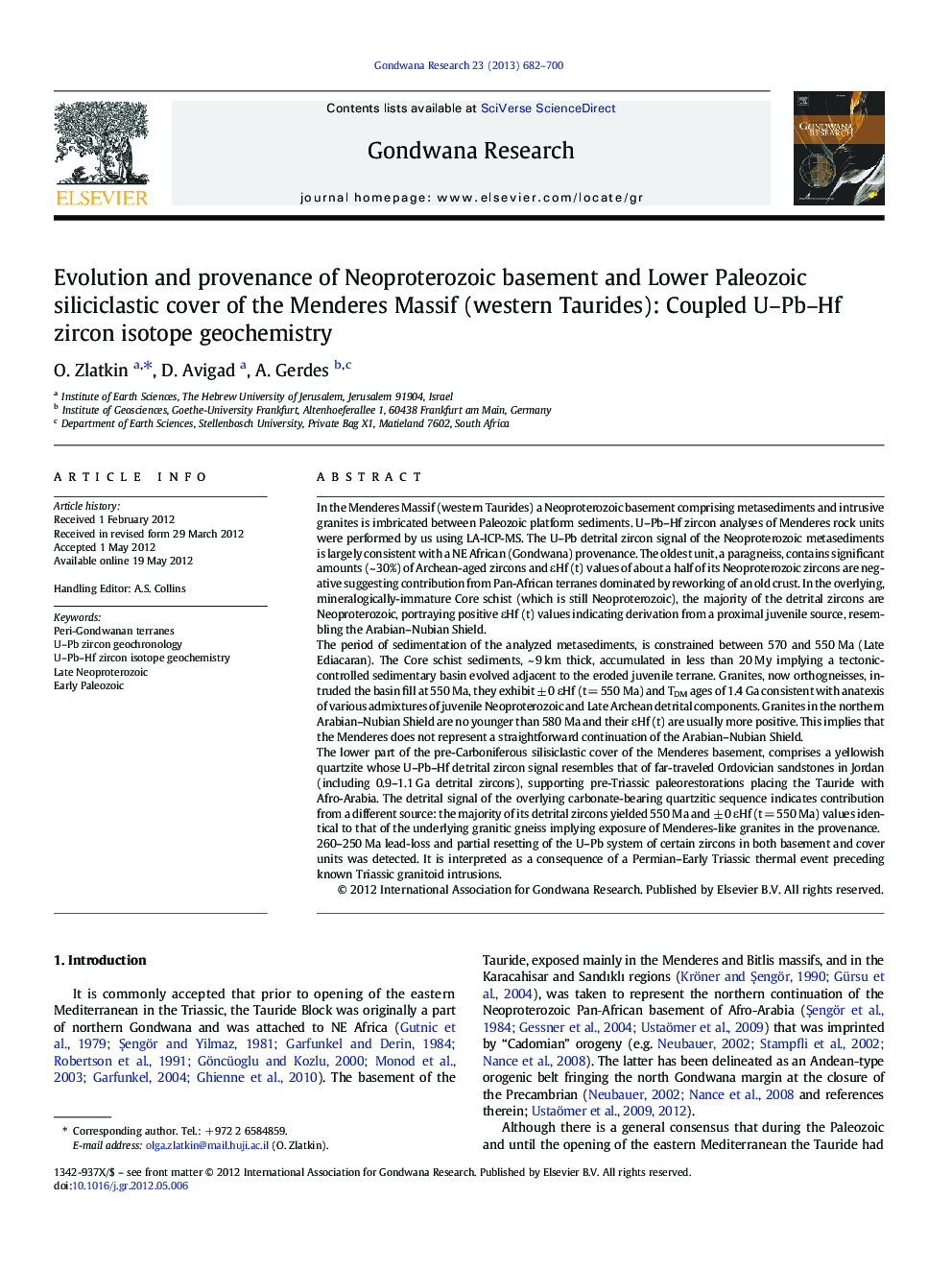| Article ID | Journal | Published Year | Pages | File Type |
|---|---|---|---|---|
| 4727463 | Gondwana Research | 2013 | 19 Pages |
In the Menderes Massif (western Taurides) a Neoproterozoic basement comprising metasediments and intrusive granites is imbricated between Paleozoic platform sediments. U–Pb–Hf zircon analyses of Menderes rock units were performed by us using LA-ICP-MS. The U–Pb detrital zircon signal of the Neoproterozoic metasediments is largely consistent with a NE African (Gondwana) provenance. The oldest unit, a paragneiss, contains significant amounts (~ 30%) of Archean-aged zircons and εHf (t) values of about a half of its Neoproterozoic zircons are negative suggesting contribution from Pan-African terranes dominated by reworking of an old crust. In the overlying, mineralogically-immature Core schist (which is still Neoproterozoic), the majority of the detrital zircons are Neoproterozoic, portraying positive εHf (t) values indicating derivation from a proximal juvenile source, resembling the Arabian–Nubian Shield.The period of sedimentation of the analyzed metasediments, is constrained between 570 and 550 Ma (Late Ediacaran). The Core schist sediments, ~ 9 km thick, accumulated in less than 20 My implying a tectonic-controlled sedimentary basin evolved adjacent to the eroded juvenile terrane. Granites, now orthogneisses, intruded the basin fill at 550 Ma, they exhibit ± 0 εHf (t = 550 Ma) and TDM ages of 1.4 Ga consistent with anatexis of various admixtures of juvenile Neoproterozoic and Late Archean detrital components. Granites in the northern Arabian–Nubian Shield are no younger than 580 Ma and their εHf (t) are usually more positive. This implies that the Menderes does not represent a straightforward continuation of the Arabian–Nubian Shield.The lower part of the pre-Carboniferous silisiclastic cover of the Menderes basement, comprises a yellowish quartzite whose U–Pb–Hf detrital zircon signal resembles that of far-traveled Ordovician sandstones in Jordan (including 0.9–1.1 Ga detrital zircons), supporting pre-Triassic paleorestorations placing the Tauride with Afro-Arabia. The detrital signal of the overlying carbonate-bearing quartzitic sequence indicates contribution from a different source: the majority of its detrital zircons yielded 550 Ma and ± 0 εHf (t = 550 Ma) values identical to that of the underlying granitic gneiss implying exposure of Menderes-like granites in the provenance.260–250 Ma lead-loss and partial resetting of the U–Pb system of certain zircons in both basement and cover units was detected. It is interpreted as a consequence of a Permian–Early Triassic thermal event preceding known Triassic granitoid intrusions.
Graphical abstractFigure optionsDownload full-size imageDownload as PowerPoint slideHighlights► Menderes Neoproterozoic Core schist unit was deposited subsequently to 570 Ma. ► Core schist was sourced from a proximal, juvenile Neoproterozoic crust. ► A paragneiss was sourced from erosion of distal, mostly non-juvenile Pan-African segments. ► 550 Ma anatectic granitoids intruded the basin fill; they do not exist in the Arabian–Nubian Shield. ► Zircons at base of Paleozoic quartzites resemble African sandstone; top resembles local basement.
